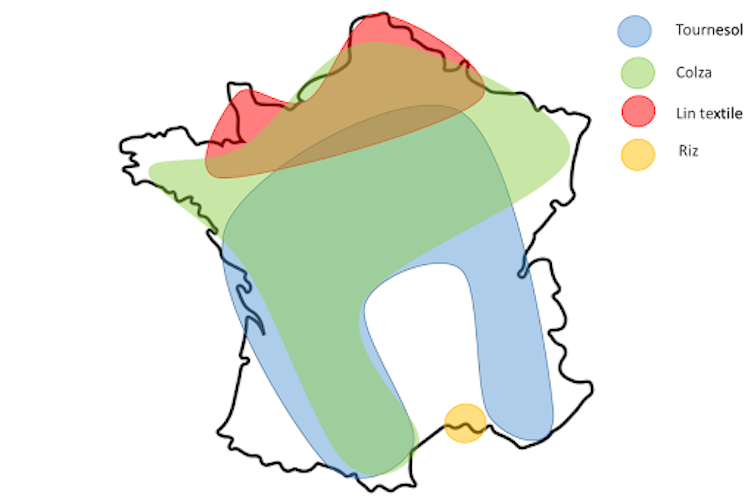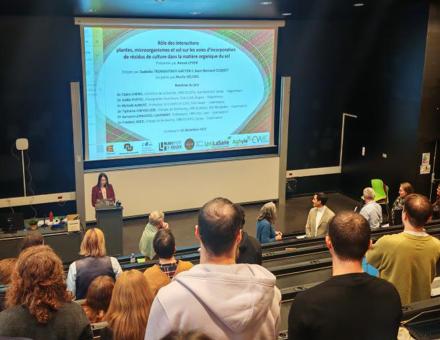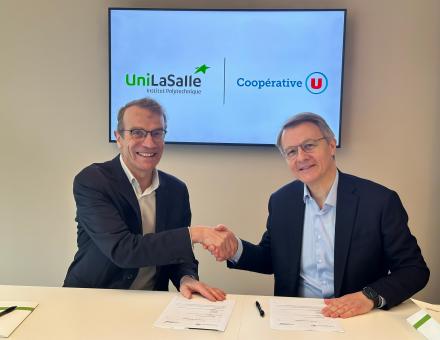Discover the new article by Hélène Lenormand, associate professor specialized in polysaccharides, for The Conversation.
The building sector accounts for 30% of France's CO₂ emissions, taking into account materials manufacturing, construction and housing. This makes it a key item for reducing greenhouse gas emissions.
Improving the energy performance of buildings is an essential lever for this reduction. The future regulation in this field, the "RE2020", brings a major evolution by proposing new indicators to evaluate the environmental impacts of the building over its entire life cycle.
Plant particles, assets for insulation
This new approach should encourage the use of materials with low greenhouse gas emissions, such as "natural insulation". Coming from plants, they are real carbon sinks, in addition to being compostable at the end of their life. Several sources of these insulators are available in France throughout the territory and all year round, potentially ensuring local availability, greatly reducing the ecological cost of transportation.
The property sought during the incorporation of plant particles in biosourced materials intended for the building is primarily thermal insulation. This is the result of the very high natural porosity of agro-resources. This porosity makes it possible to imprison air, naturally insulating. The walls of the plant particles are composed of hydrophilic polymers. These polymers can therefore be used as a binder, an asset for the design of certain materials. The possible applications of particles in eco-construction vary according to their biochemistry and their microstructure.
France, a land of agro-resources
Meeting the challenges of building and renovating buildings with bio-based construction materials will require huge quantities of plant resources and plants with varied properties. Fortunately, these sources are numerous and potentially important. The vast majority of these agroresources come from annual crops and in particular from their plant stems. The options are numerous: sunflower, rapeseed, corn, wheat, barley, oats, rye, hemp, rice, miscanthus, reed are all being explored for use in eco-construction.
Historically in France, the first plant particles identified for the manufacture of "agri-concrete" are the co-products of hemp stalk defibration. Hemp and flax crops are mainly used to produce fibers. The defibration of the stalks of these plants produces plant particles called flax shives for flax stalks and shives for hemp stalks.
There are other crops with high potential on French soil. For example, miscanthus, or "elephant grass", planted to produce biomass for valorization into bioenergy, has an intense yield of 15 to 20 tons per hectare per year. Grinding the miscanthus stem produces a single type of plant particle that could also be used in eco-construction.
Arbitrating between several applications
The total of the different annual deposits identified on the French territory can be estimated at potentially more than 15 million tons of these plant particles. This figure includes particles that are already used for other purposes, such as horticultural mulching, animal bedding and bioenergy.
Concerning the stalks not harvested today (sunflower, rapeseed, corn, part of the cereals), it is necessary to take into account the agronomic need of the soil to plan to leave biomass there. Leaving half of it would avoid agronomic dangers.
If there is competition between these various applications, the annual deposit is so gigantic that all the ways of valorisation using vegetable particles could be provided without fear of competition.
A geographical complementarity...
Hemp and miscanthus crops offer limited surfaces but promise to be implanted throughout the territory. Corn and cereal crops cover almost the entire French territory, with more or less homogeneous distributions according to regions. The other crops considered have specific territories.

Map showing the geographical distribution of different crops of interest for eco-construction. Hélène Lenormand, Provided by the author
The complementarity of these zones is apparent, allowing us to see that the entire French territory can be covered for the deposits of plant particles from the various crops. The local valorization of the particles can thus be envisaged, which would make it possible to limit the carbon footprint related to the transport of these light and bulky materials.
... and temporal
Most of the crops considered are annual crops, meaning that they are harvested once a year, at a specific time of the year.

Harvesting periods for French annual crops that can generate plant particles for construction. Hélène Lenormand, Provided by the author
It appears that the diversity of crops and therefore the different harvesting periods associated with them allow a temporal complementarity ensuring an availability of plant material throughout the year. This avoids constraints linked to long stocks.
Coming from nature, plant particles inevitably have variable properties, but given the multitude of specifications of bio-based materials for construction, the diversity and complexity of plant particles become a source of potential.The Conversation
Hélène Lenormand, Associate professor specialized in polysaccharides, UniLaSalle
This article is republished from The Conversation under a Creative Commons license. Read the original article.






